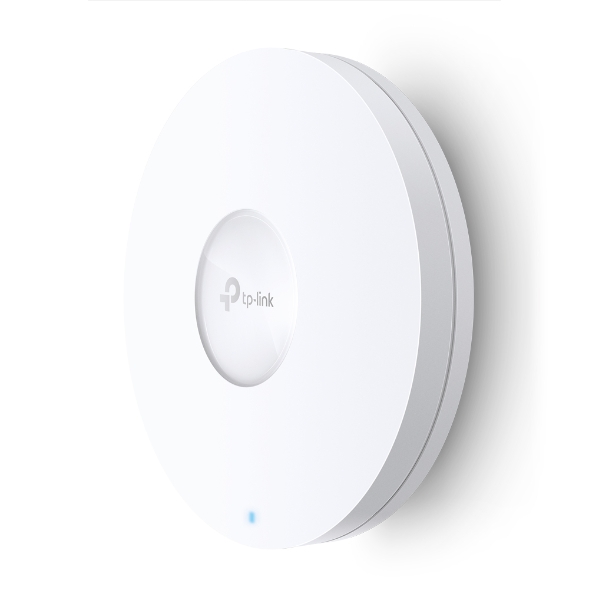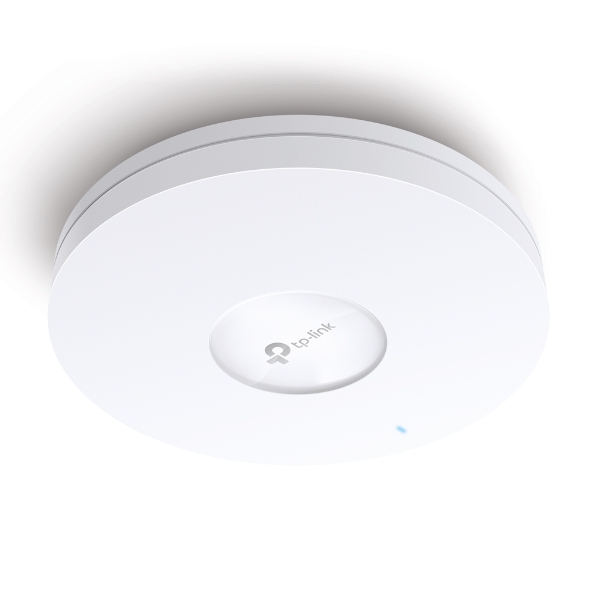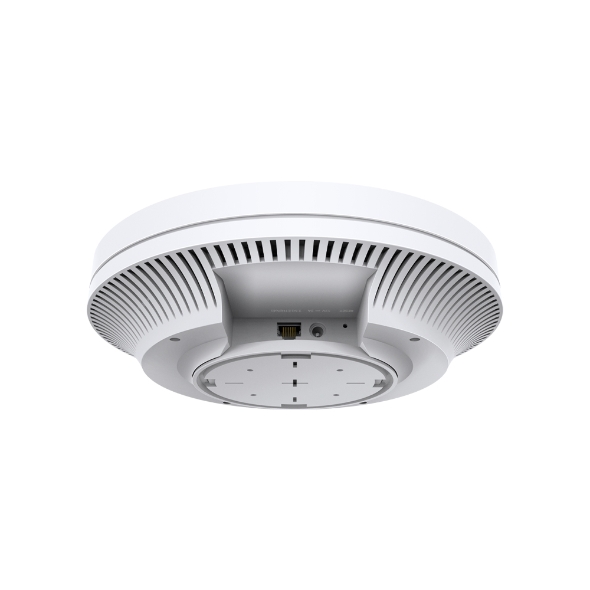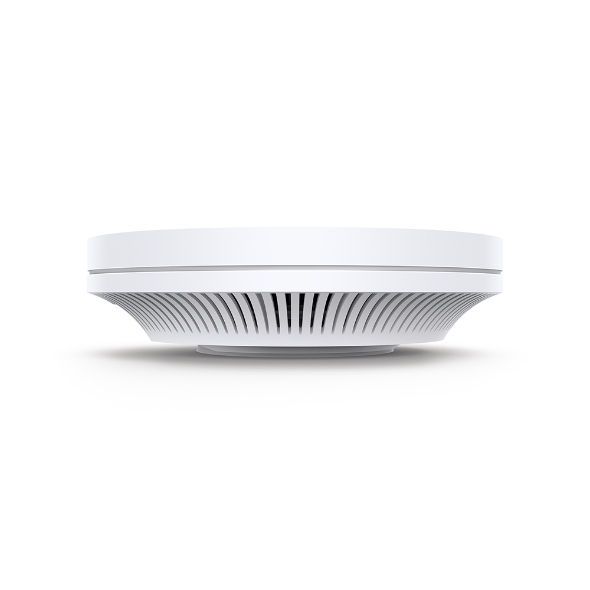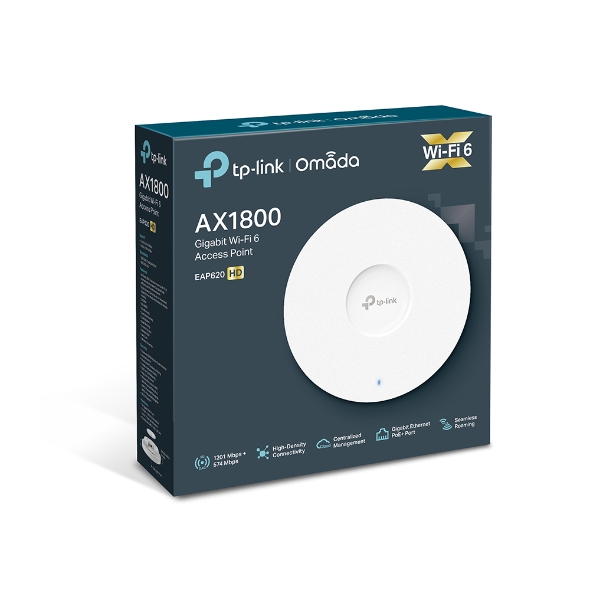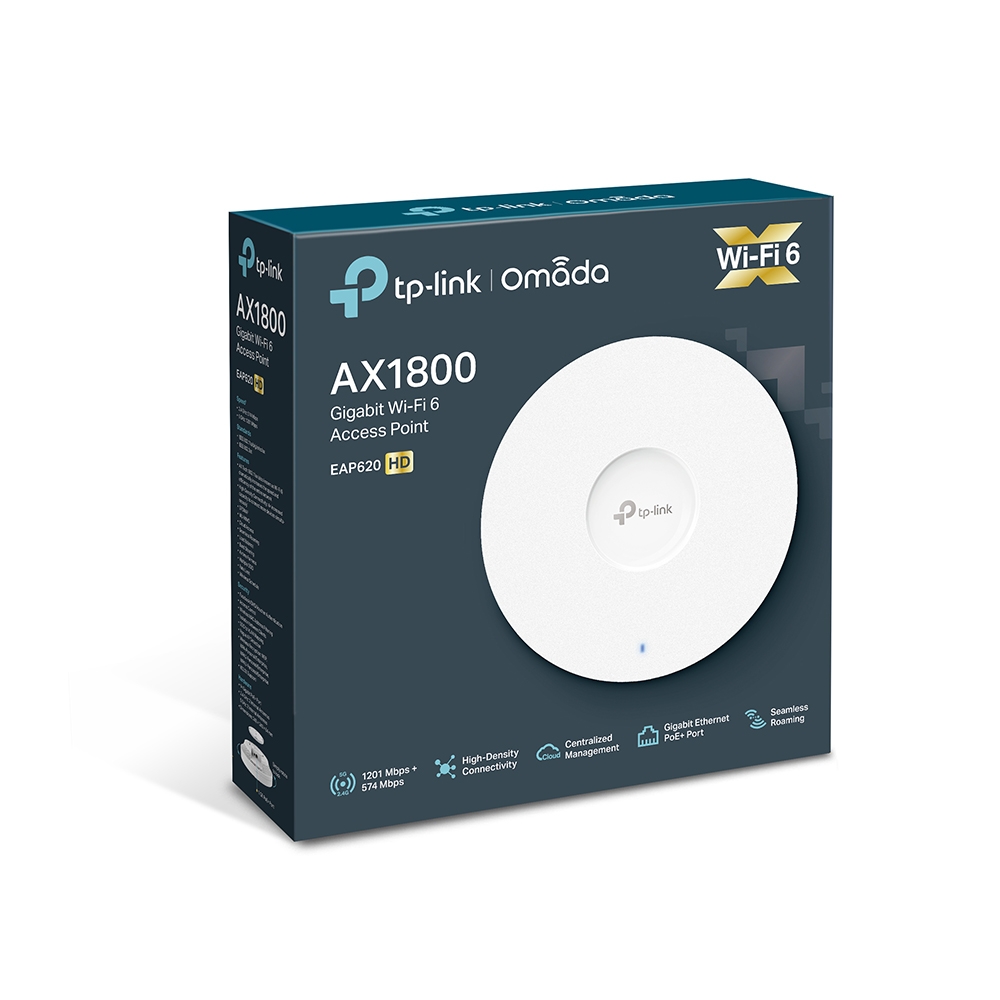EAP620 HD
NewAX1800 Wireless Dual Band Ceiling Mount Access Point
- Ultra-Fast Wi-Fi 6 Speeds: Simultaneous 574 Mbps on 2.4 GHz and 1201 Mbps on 5 GHz totals 1775 Mbps Wi-Fi speeds.†
- High-Density Connectivity: 4× increased capacity to connect more devices simultaneously.‡
- Integrated into Omada SDN: Centralized Cloud Management and Intelligent Monitoring.
- Centralized Management: Cloud access and Omada app for ultra convenience and easy management.△
- Seamless Roaming: Even video streams and voice calls are unaffected as users move between locations.△
- PoE+ Support: Supports Power over Ethernet (802.3at) for convenient deployment and installation.
- Secure Guest Network: Along with multiple authentication options (SMS/Facebook Wi-Fi/ Voucher, etc.) and abundant wireless security technologies.△
| HARDWARE FEATURES | |
|---|---|
| Interface | 1× Gigabit Ethernet (RJ-45) Port (supports IEEE802.3at PoE) |
| Button | Reset |
| Power Supply | • 802.3at PoE• 12 V DC |
| Power Consumption | • EU: 12 W• US: 13.5 W |
| Dimensions ( W x D x H ) | 9.6 × 9.6 × 2.5 in (243 × 243 × 64 mm) |
| Antenna Type | Internal Omni• 2.4 GHz: 2× 4 dBi• 5 GHz: 2× 5 dBi |
| Mounting | Ceiling /Wall Mounting (Kits included) |
| WIRELESS FEATURES | |
|---|---|
| Wireless Standards | IEEE 802.11ax/ac/n/g/b/a |
| Frequency | 2.4 GHz and 5 GHz |
| Signal Rate | 5 GHz: Up to 1201 Mbps2.4 GHz: Up to 574 Mbps |
| Wireless Functions | • 1024-QAM• 4× Longer OFDM Symbol• OFDMA• Multiple SSIDs (Up to 16 SSIDs, 8 for each band)• Enable/Disable Wireless Radio• Automatic Channel Assignment• Transmit Power Control (Adjust Transmit Power on dBm)• QoS(WMM)• MU-MIMO • Seamless Roaming△• Omada Mesh△• Band Steering• Load Balance• Airtime Fairness • Beamforming• Rate Limit• Reboot Schedule• Wireless Schedule• Wireless Statistics based on SSID/AP/Client |
| Wireless Security | • Captive Portal Authentication△• Access Control• Wireless Mac Address Filtering• Wireless Isolation Between Clients• SSID to VLAN Mapping• Rogue AP Detection• 802.1X Support• WEP, WPA-Personal/Enterprise, WPA2-Personal/Enterprise, WPA3-Personal/Enterprise |
| Transmission Power | • CE:<20 dBm(2.4 GHz, EIRP)<23 dBm(5 GHz, EIRP)• FCC:<25 dBm (2.4 GHz)<25 dBm (5 GHz) |
| MANAGEMENT | |
|---|---|
| Omada App | Yes |
| Centralized Management | • Omada Hardware Controller (OC300)• Omada Hardware Controller (OC200)• Omada Software Controller |
| Cloud Access | Yes (Through OC300, OC200, or Omada Software Controller) |
| Email Alerts | Yes |
| LED ON/OFF Control | Yes |
| Management MAC Access Control | Yes |
| SNMP | v1, v2c, v3 |
| System Logging Local/Remote Syslog | Local/Remote Syslog |
| SSH | Yes |
| Web-based Management | HTTP/HTTPS |
| L3 Management | Yes |
| Multi-site Management | Yes |
| Management VLAN | Yes |
| OTHERS | |
|---|---|
| Certification | CE, FCC, RoHS |
| Package Contents | • EAP620 HD• Power Adapter• Ceiling/Wall Mounting Kits• Installation Guide |
| System Requirements | Microsoft Windows XP, Vista, Windows 7, Windows 8, Windows10, Windows11, Linux |
| Environment | • Operating Temperature: 0–40 ℃ (32–104 ℉)• Storage Temperature: -40–70 ℃ (-40–158 ℉)• Operating Humidity: 10–90% RH non-condensing• Storage Humidity: 5–90% RH non-condensing |
†Maximum wireless signal rates are the physical rates derived from IEEE Standard 802.11 specifications. Actual wireless data throughput and wireless coverage are not guaranteed and will vary as a result of 1) environmental factors, including building materials, physical objects, and obstacles, 2) network conditions, including local interference, volume and density of traffic, product location, network complexity, and network overhead, and 3) client limitations, including rated performance, location, connection, quality, and client condition.
‡4× Increased Capacity refers to increase in median throughput under dense environment compared to standard 4×4 11ac access point.
△Omada Mesh, Seamless Roaming, Cloud Access, and Captive Portal require the use of Omada SDN controllers. Please go to Omada Mesh Product List to find all the models supported by Omada mesh technology, and refer to the User Guides of Omada SDN controllers for configuration methods.
*Use of OFDMA requires clients to also support OFDMA.
